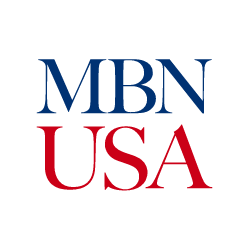“We have seen firsthand the impact of supplier diversity and how it creates a multiplier effect by letting small, minority-owned firms invest in their own growth and spend more with other businesses in their supply chains. This [investment], in turn, generates jobs, increases wages and boosts spending in local communities.” — Kristin Malek, director, business diversity
Q: When did your company
begin its supplier diversity program?
A: 2007.
Q: Can you tell us a bit about your supplier diversity program history?
A: We formalized our
supplier diversity program in 2007 before diversity was a trend. At CDW,
diversity has always been a long-term business solution. That’s because, for
us, supplier diversity is not about expenditure targets or handouts, but rather
partnering with an extensive network of the most creative, innovative and
competitive suppliers to deliver the best solutions and experiences for our
customers. Since 2007, we have facilitated more than $14 billion of direct and
indirect spending with small, minority-owned firms, including $2.1 billion in
2020. We currently have partnerships with 400 diverse suppliers and are
building a digital library of 1,000 diverse suppliers.
We have seen firsthand
the impact of supplier diversity and how it creates a multiplier effect by
letting small, minority-owned firms invest in their own growth and spend more
with other businesses in their supply chains. This [investment], in turn,
generates jobs, increases wages and boosts spending in local communities.
As businesses and
communities seek to recover from the disruption of COVID-19 and address
pressing issues around inequality, we are committed to driving inclusive growth
and creating economic opportunities for all.
Q: Why did your company
decide to become a BDR member?
A: We believe that
supplier diversity has a proven impact on our bottom line through the value it
creates for our clients. For example, people are increasingly looking to buy
from and work for organizations that share their values around diversity,
inclusion and social justice. By partnering with our network of small and
minority-owned firms, our customers can meet the expectations of both their
clients and their own employees, ultimately, enhancing their ability to attract
and retain them.
Q: Besides having a $1 billion annual spend with diverse suppliers, what does it take to be a BDR company?
A: We objectively
measure our diversity spend. We set clear targets for our supplier diversity
program and measure our progress along the way. Tracking our supplier spend
allows us to see the overall value of our vendor spending.
Alongside our Billion
Dollar Roundtable membership, we actively support a variety of organizations
and events that focus on identifying opportunities for small and diverse
businesses to thrive and grow including: [U.S. Department of Commerce] Minority
Business Development Agency, National Minority Supplier Development Council,
Women’s Business Enterprise National Council, National Veteran-Owned Business
Association, Disability:IN and National LGBT Chamber of Commerce.
We’re also proud to have
been recognized for diversity excellence in 2020 and 2021 by several leading
organizations and publications dedicated to providing greater representation,
employment and economic advancement for minority, women’s, veteran and LGBTQ+
communities.
We invest more than just
dollars with our suppliers. We also provide ongoing customized training from
our sales and technical experts, access to capital and advocacy and
reputational support.
Q: How has your company
benefited from BDR membership?
A: Our relationship with
BDR creates a significant competitive advantage for CDW and our customers. We
drive the high level of direct spend with minority-, disabled-, veteran- and
women-owned companies that BDR demands because of the direct impact it has on
our market share and brand equity and because we believe that generating jobs,
increasing wages and boosting spending in local communities is good for
business and for the economy.
Q: What advice would you give to corporations that would like to become BDR members?
A:
• Fully define,
measure and track
your supplier diversity
program and create a corporate policy statement defining this program, so that
internal stakeholders and buyers understand what to look for and how to
evaluate new suppliers.
• Commitment to supplier
diversity needs to start at the very top of the organization. Secure that
commitment.
• Supplier diversity
only becomes a reality when it’s ingrained in the organization’s day-to-day
systems. Integrate supplier diversity into the procurement function company
wide.
• Helping diverse
suppliers meet your selection criteria is a tide that lifts all boats. Offer
training on how to qualify for your roster.
Q: What advice do you
have for minority business enterprises interested in doing business with your
company?
A: Getting more work
into the hands of qualified M/WBE [minority/women’s business enterprise] firms
creates more prosperous and equitable communities. Our are vibrant and talented
businesses that make tremendous contributions to the economy. We are committed
to personally engaging with our diverse suppliers and customers through many
different opportunities including:
• Utilizing our
relationships with specialist organizations like Women’s Business Enterprise
National Council, National Minority Supplier Development Council, etc. to find
certified suppliers.
• Providing a robust
supplier training program to help our suppliers grow and scale.
• Maintaining a presence
at several national conferences and actively connecting with suppliers on-site.
• Launching a mentor
protégé program with City University of New York.
To learn more about
CDW’s supplier diversity program, visit cdw.supplierone.com.





